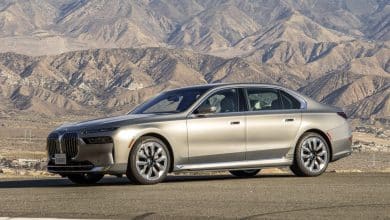Mercedes-Benz will import the electric V-Class and Marco Polo to Canada

A week ago, Mercedes Benz disclosed strategic information on the future of its division of commercial vans and passenger transport. As is usually the case, the press release was long, detailed and talked a lot about markets other than Canada. One sentence, however, caught our attention: “In the United States and Canada, Mercedes-Benz Vans will offer, for the very first time, a private luxury mid-size van. Not a single word more, no more details, nothing else.
Contents
Comfortable VIP transport
After contacting Mercedes-Benz Canada, the confirmation came: Mercedes-Benz will enter the lucrative luxury van segment as can already be seen in Europe with the V-Class. To better position itself in terms of format, the Class V is essentially a Metris fully equipped, very luxurious, spacious and very comfortable for passenger transport. We are targeting large, financially well-off families, limousine fleets and airport carriers.

Marco Polo
In the same vein, Mercedes-Benz confirms the arrival of a popular model in Europe, the V-Class Marco Polo. This range, manufactured at the Mercedes-Benz factory by an OEM, is a recreational vehicle conversion with a pop-up roof and a full cabin layout for camping. This product will diversify the offer on the market and will be offered within the Mercedes-Benz range itself; unlike regular recreational vehicles, there is no middle man between the van builder and the customer.
VAN.EA
The biggest news yet, besides the introduction of the V-Class and the Marco Polo version, is the fact that these products will be built on the new VAN.EA electric platform. According to current Mercedes-Benz documents, the first vans will leave the factory on this basis in 2026. For several years, there will be an overlap between thermal and electric technologies in the range internationally, but on the Canadian market, the V-Class and Marco Polo will be electrified.

For the moment, we do not know if the V-Class will adopt the same name as in Europe under the EQ range with the EQV. Obviously, it is also too early to talk about price and official autonomy. However, Mercedes-Benz claims to have carried out a test with a prototype of the new generation of the electric eSprinter built on the basis VAN.EA between Las Vegas, Nevada, and Long Beach, California, a distance of 443 kilometers without recharging. Considering that the V-Class is smaller, we can believe that its autonomy will be better.
Conclusion
In 2026, it still seems far away, but in the automotive world, it’s tomorrow. Electrification is an issue that affects all sectors of activity, including passenger transport and recreational activities. As for the Marco Polo, sooner or later, campgrounds will also have to offer charging stations to their customers. Connecting while camping will no longer be anecdotal. In addition, the contribution of V2L (Vehicle to Load) technology will make it possible to electrify almost all camping accessories and thus maintain a higher degree of comfort, even on an adventure. However, far beyond the comfort of passengers or their night’s sleep while camping, what is most important is the electrification of these automotive segments.











